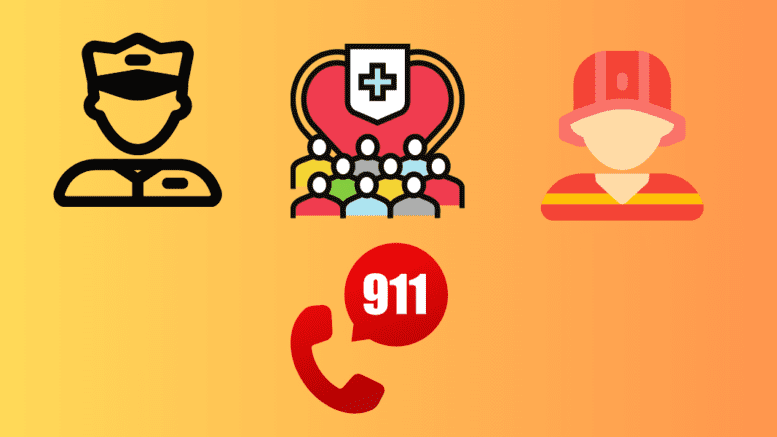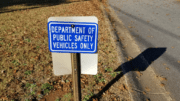The Cobb County Department of Emergency Communications issued the following appeal to Cobb residents to support two bipartisan bills that have been submitted in the U.S. House and Senate, HR 6319 and Senate Bill 3556:
Cobb dispatchers support bipartisan bills
The Cobb County Department of Emergency Communications (DEC) is calling on the community to help pass two bipartisan bills that would reclassify 911 dispatchers and call-takers nationwide as “Protective Service Occupations” in the federal government’s Standard Occupation System (SOC) system. The re-classification would put them in a category that would give them access to more training, mental health support, and equitable benefits. 911 professionals are currently categorized as “Office and Administrative Support Occupations,” along with office clerks and debt collectors.
Cobb DEC announced that it is backing both bills, the Supporting Accurate Views of Emergency Services Act (911 SAVES Act, H.R. 6319), sponsored by Representatives Norma Torres (D-CA) and Brian Fitzpatrick (R-PA) and the Enhancing First Response Act (S. 3556) sponsored by Senators Amy Klobuchar (D-MN), Marsha Blackburn (R-TN), Martin Heinrich (D-NM), and John Thune (R-SD). Both bills have garnered widespread backing amongst the emergency response community.
“I’ve grown up in this industry, working as a 911 professional for 33 years. I can’t stress enough how long overdue this is,” said DEC Director Melissa Alterio. “Reclassifying 911 professionals as first responders on the national level not only acknowledges the immense pressure and responsibility they bear but also ensures they receive the recognition and resources they deserve.”
Public safety telecommunicators are often the first point of contact in emergencies, working tirelessly to ensure swift and effective responses to crises. They utilize life-saving protocols to provide emergency medical instructions, deal with callers having mental health crises, and coordinate the dispatch of law enforcement, fire, and medical personnel. Despite their pivotal role in the emergency response chain, these professionals have been historically classified as administrative support. The proposed legislation in both the House of Representatives and the Senate seeks to rectify this classification, recognizing the critical nature of their responsibilities.
The bills, which have gained bipartisan sponsorship, aim to address critical issues such as training, mental health support, and equitable benefits for public safety telecommunicators. This change in classification offers a recruitment and retention advantage to many 911 centers nationwide, an issue that many centers need help with.
As the legislative process unfolds, public safety telecommunicators nationwide remain hopeful that these bills will receive the attention and support they deserve. This legislative effort seeks to bring their classification to the mission-critical work performed. It recognizes the indispensable role 911 professionals play in ensuring the safety and well-being of communities nationwide.
On behalf of 911 professionals across the United States, we urge the community to get involved and support these bipartisan bills by contacting your state senator and house representatives and asking them to support the 911 SAVES and Enhancing First Response Act.
About Cobb County
Cobb County is the third most populous county in Georgia, smaller only than Fulton and Gwinnett counties.
The governing authority is the five-member Cobb County Board of Commissioners, which includes a Chairperson and four district commissioners.
The current board is:
| Chairwoman | Lisa Cupid |
| District 1 Commissioner | Keli Gambrill |
| District 2 Commissioner | Jerica Richardson |
| District 3 Commissioner | JoAnn Birrell |
| District 4 Commissioner | Monique Sheffield |
The U.S. Census Bureau gives the following quick facts about the county:
| PeoplePopulation | |
| Population Estimates, July 1 2021, (V2021) | 766,802 |
| Population estimates base, April 1, 2020, (V2021) | 766,149 |
| Population, percent change – April 1, 2020 (estimates base) to July 1, 2021, (V2021) | 0.1% |
| Population, Census, April 1, 2020 | 766149 |
| Population, Census, April 1, 2010 | 688078 |
| Age and Sex | |
| Persons under 5 years, percent | 5.6% |
| Persons under 18 years, percent | 22.7% |
| Persons 65 years and over, percent | 13.3% |
| Female persons, percent | 51.3% |
| Race and Hispanic Origin | |
| White alone, percent | 61.7% |
| Black or African American alone, percent(a) | 29.2% |
| American Indian and Alaska Native alone, percent(a) | 0.5% |
| Asian alone, percent(a) | 5.7% |
| Native Hawaiian and Other Pacific Islander alone, percent(a) | 0.1% |
| Two or More Races, percent | 2.8% |
| Hispanic or Latino, percent(b) | 13.7% |
| White alone, not Hispanic or Latino, percent | 50.2% |
| Population Characteristics | |
| Veterans, 2016-2020 | 40562 |
| Foreign born persons, percent, 2016-2020 | 15.6% |
| Housing | |
| Housing units, July 1, 2021, (V2021) | 311450 |
| Owner-occupied housing unit rate, 2016-2020 | 65.8% |
| Median value of owner-occupied housing units, 2016-2020 | $273,900 |
| Median selected monthly owner costs -with a mortgage, 2016-2020 | $1,672 |
| Median selected monthly owner costs -without a mortgage, 2016-2020 | $474 |
| Median gross rent, 2016-2020 | $1,264 |
| Building permits, 2021 | 3247 |
| Families & Living Arrangements | |
| Households, 2016-2020 | 283359 |
| Persons per household, 2016-2020 | 2.63 |
| Living in same house 1 year ago, percent of persons age 1 year+, 2016-2020 | 84.6% |
| Language other than English spoken at home, percent of persons age 5 years+, 2016-2020 | 20.5% |
| Computer and Internet Use | |
| Households with a computer, percent, 2016-2020 | 97.2% |
| Households with a broadband Internet subscription, percent, 2016-2020 | 93.3% |
| Education | |
| High school graduate or higher, percent of persons age 25 years+, 2016-2020 | 92.6% |
| Bachelor’s degree or higher, percent of persons age 25 years+, 2016-2020 | 48.4% |
| Health | |
| With a disability, under age 65 years, percent, 2016-2020 | 6.2% |
| Persons without health insurance, under age 65 years, percent | 13.8% |
| Economy | |
| In civilian labor force, total, percent of population age 16 years+, 2016-2020 | 69.6% |
| In civilian labor force, female, percent of population age 16 years+, 2016-2020 | 64.3% |
| Total accommodation and food services sales, 2017 ($1,000)(c) | 2056579 |
| Total health care and social assistance receipts/revenue, 2017 ($1,000)(c) | 5569500 |
| Total transportation and warehousing receipts/revenue, 2017 ($1,000)(c) | 1536858 |
| Total retail sales, 2017 ($1,000)(c) | 18543691 |
| Total retail sales per capita, 2017(c) | $24,615 |
| Transportation | |
| Mean travel time to work (minutes), workers age 16 years+, 2016-2020 | 31.2 |
| Income & Poverty | |
| Median household income (in 2020 dollars), 2016-2020 | $80,830 |
| Per capita income in past 12 months (in 2020 dollars), 2016-2020 | $41,480 |
| Persons in poverty, percent | 9.2% |
| BusinessesBusinesses | |
| Total employer establishments, 2020 | 21492 |
| Total employment, 2020 | 358927 |
| Total annual payroll, 2020 ($1,000) | 21780372 |
| Total employment, percent change, 2019-2020 | -0.3% |
| Total nonemployer establishments, 2019 | 86497 |
| All employer firms, Reference year 2017 | 17066 |
| Men-owned employer firms, Reference year 2017 | 10386 |
| Women-owned employer firms, Reference year 2017 | 3537 |
| Minority-owned employer firms, Reference year 2017 | 3058 |
| Nonminority-owned employer firms, Reference year 2017 | 12177 |
| Veteran-owned employer firms, Reference year 2017 | 1204 |
| Nonveteran-owned employer firms, Reference year 2017 | 13909 |
| GeographyGeography | |
| Population per square mile, 2020 | 2254.8 |
| Population per square mile, 2010 | 2026.4 |
| Land area in square miles, 2020 | 339.78 |
| Land area in square miles, 2010 | 339.55 |





